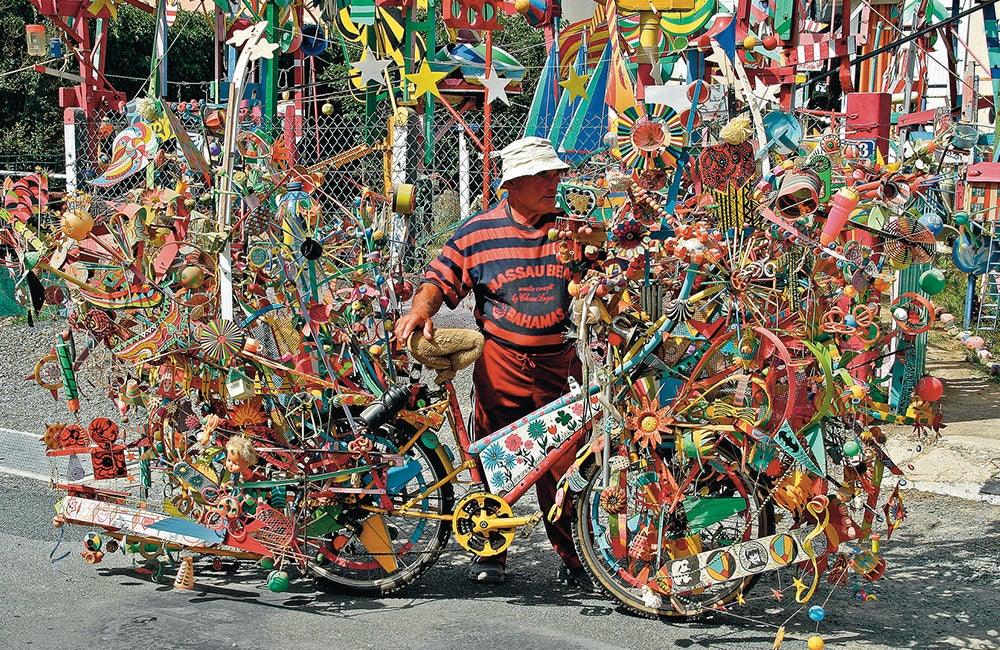First published: Winter 2018
French environments such as the Palais Idéal and Picassiette are well known, but Bruno Montpied’s inventory of French spontaneous environments reveals hundreds more creations across the country
There is a rich tradition of outsider environments in France, often in rural areas. Some of the environments no longer exist, but many are still standing; the oldest are over 200 years old, while others are still under construction. Over 300 such sites and their autodidactic creators feature in the book Le Gazouillis des Éléphants (“The Chirping of Elephants”).
All of the sites were built with no expectation of recognition or profit. Many of the creators started their projects after retiring, while others exist on the margins of French society; the majority had no artistic training or significant contact with art and culture other than through advertising and mass media. Any reference to art history is diffused and distant, and the techniques used often derive from the creators’ original occupations.

André Pailloux (b. 1943), posing in front of his garden bristling with colourful reels, with his bike loaded with trinkets and other assemblages, region of Olonne-sur-Mer in Vendée (Pays de la Loire), photo: Bruno Montpied
Since the 1960s, there have been several French books on autodidactic builders and sculptors whose work is naive or brut. However, these books have only covered about 40 French sites, and have typically featured artists such as Ferdinand Cheval (1836–1924), Raymond Isidore Picassiette (1900–1964) and Abbé Adolphe-Julien Fouré (1839-1910) – for example, Les Inspirés et leurs Demeures (“The Inspired and their Homes”) by Gilles Ehrmann, with its preface by André Breton. By contrast, Le Gazouillis des Éléphants features many more artists and highlights the work of ordinary people, focussing on creators who were rural workers or craftsmen. Their art has unfolded beyond the beaten track, outside the commercial world and outside the codes of scholarly art. They are not necessarily people who articulate their thoughts and theories verbally – their silence allows their work to reveal the unspoken. Many of the creators have taken up the tools of their former profession and began to carve or erect a pictorial message to the world in their own immediate environment.
These non-conformist environments created by regular people originate in the sixteenth and seventeenth centuries, when individualistic consciousness emerged among artisans in France. The creations show traces that they are descended from the mansions and princely parks of the Ancien Régime in the eighteenth century, through the medieval-style properties of the nineteenth century, to the gardens and housing estates of working people in the twentieth century.
This is an article extract; read the full article in Raw Vision #100




